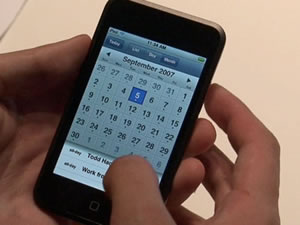
Because an online college student might want to meet a classmate the old-fashioned way – face to face – Arizona State University (ASU) has a social networking platform that helps students spot each other on their laptops and smart phones.
More than 600 ASU Online students are connected to spark, a “geosocial” site that allows students to check in when they enter a library, coffee shop, or anywhere else in their community. The hope is that other ASU web-based students will see a virtual classmate in a nearby coffee shop and stop by to say hello.
The spark site, powered by San Francisco-based Double Dutch, is similar to other geosocial or geo-tagging services like Foursquare, Yelp, Gowalla, and Facebook Places.
Instead of posting your location on a vast social network – especially Facebook Places – spark is only accessible to ASU Online students with university-issued eMail address, creating “micro-communities based on place-based networks,” said Lawrence Coburn, Double Dutch CEO.
“We’re not taking the mega-app approach here,” said Coburn, whose company took in $1.2 million last month from investors led by Lightbank, the investment fund run by Groupon cofounders. “We are starting to see more demand for single purpose niche networks … because people don’t want to tell 1,000 people that they’re at the gym.”
Spark could facilitate face-to-face connections between ASU Online students looking for a study partner, but the site also could provide a digital space to sound off about homework, quizzes, and exams – topics that students hesitate to discuss in broad social media platforms.
“Students should feel free to geek out and share stuff about their physics homework any time they want,” said Sarah Krznarich, an ASU social media expert who has worked with Double Dutch in creating spark.
Online programs are filled with nontraditional college students with families and full-time jobs, so a niche social networking platform like spark could help those students find others with similar demands and schedules.
“It’s about academic networking and finding people who are in the same boat as you,” Krznarich said. “People who work and go to school who want a low-stress way to connect with other people in their cohort. … By providing a platform in the mobile space, we’re giving our students a way to connect with each other, and with the university, outside of their computer.”
Platforms like spark could soon be available at more colleges and universities, said Coburn. Double Dutch, which launched in January, is in talks with 15 campuses considering adoption of their own spark platform for web-based students.
Getting college officials to buy into geosocial networking, Coburn said, can be challenging for tech startups.
“We found that universities are very conservative when it comes to adopting new technology,” he said. “But we’re trying.”
Krznarich said ASU Online has yet to push for students to sign in to the spark app. She expects the 600-student spark population to rise once the university advertises the geosocial service.
Popular geo-tagging sites, including Gowalla, have sought higher-education partnerships. Gowalla challenged college students last fall to check in on the site throughout the week and on football game days for a chance to win various Apple products.
The University of Houston racked up the most Gowalla check-in points, followed by the University of Texas at Austin and Baylor University.
Social media researchers said last summer, after Facebook introduced its Places application, that the technology could catch on in higher education.
Menachem Wecker, co-founder of the Association for Social Media & Higher Education, a group based at George Washington University, said colleges that have connected with current and prospective students through Facebook could use the Places application to track campus hot spots and foot traffic patterns.
The application could be a “good way to monitor who checks in on campus [so] they can identify prospective students, staff, and faculty members, [and] they can see what locations are frequented by students, and a variety of other really useful statistics that will only help them better serve their constituents,” said Wecker, a writer for George Washington’s online news service.
Some campuses jumped on the Facebook Places bandwagon within weeks of its unveiling.
The Lexington, Ky., university placed six-foot wooden Facebook Places logos in six campus locations with the heaviest foot traffic to encourage students to “check in” using Facebook’s geo-tagging application.
David Coomer, director of interactive services at Cornett-IMS—the advertising agency that helped the university launch the Places program—said that if the campaign can spur 10,000 check-ins this semester, Kentucky could appear in 1.3 million Facebook news feeds, because each Facebook user has an average of 130 friends who can track his or her updates.
“We would like this to really have a viral marketing element … and we knew a brochure wouldn’t lead to 10,000 check-ins,” said Coomer, adding that Places would become a “household name” within six months. “It’s a great value for the university from a marketing standpoint.”
- Research: Social media has negative impact on academic performance - April 2, 2020
- Number 1: Social media has negative impact on academic performance - December 31, 2014
- 6 reasons campus networks must change - September 30, 2014

